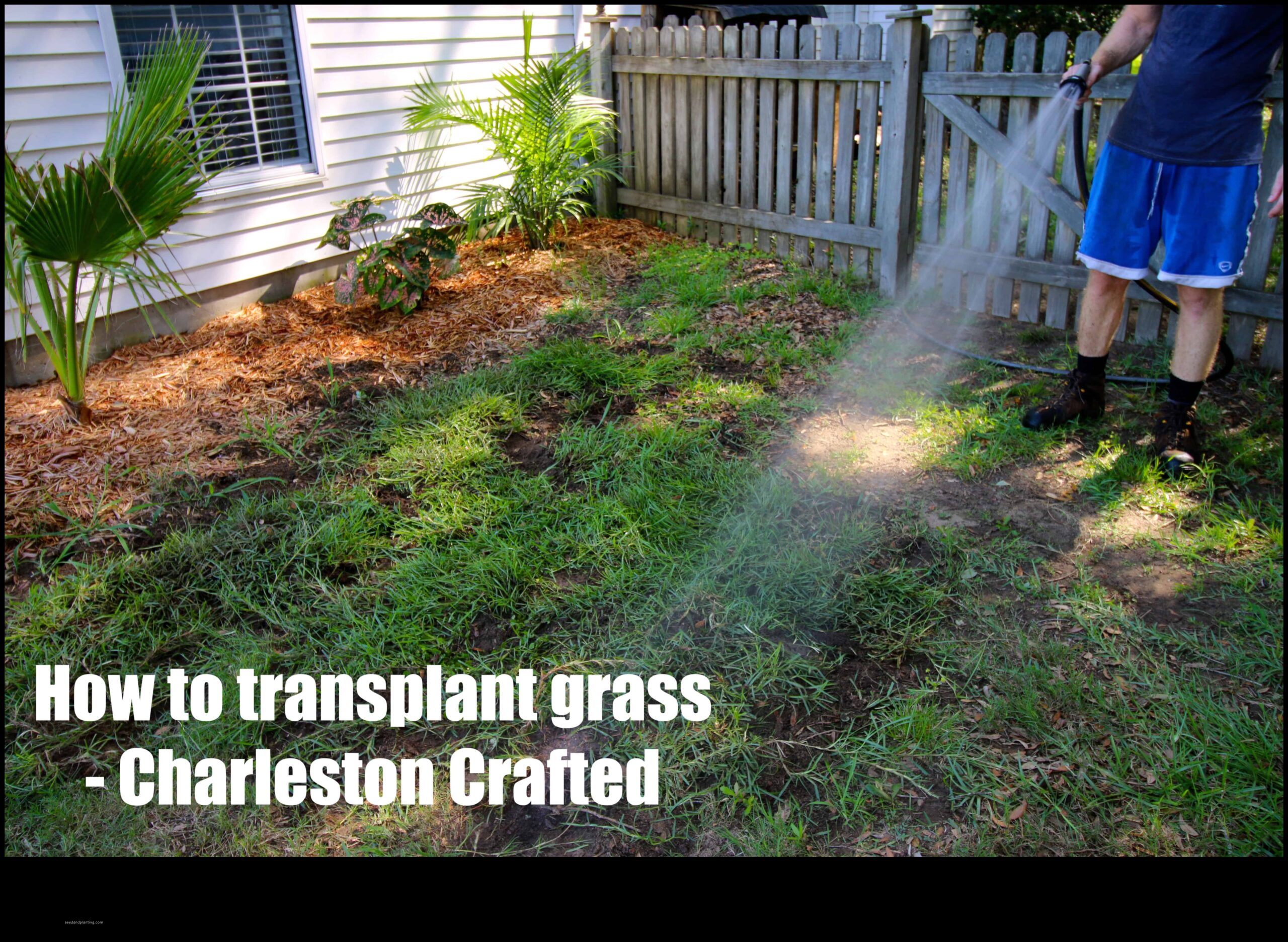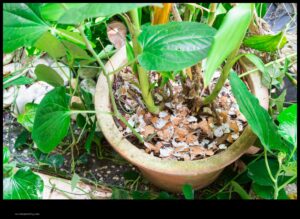
Can Grass Be Transplanted?
Grass transplanting is the process of moving grass from one location to another. It is a relatively simple process, but there are a few things to keep in mind in order to ensure success.

The best time to transplant grass is in the spring or fall, when the weather is mild and the grass is actively growing.
To transplant grass, you will need the following materials:
- A sharp spade or shovel
- A garden hose
- A rake
- A transplanter or trowel
- A tarp or sheet
- Soil or compost
To prepare the new planting site, you will need to loosen the soil and remove any weeds or debris. If the soil is compacted, you may need to add some compost or topsoil to improve drainage.
To transplant the grass, you will need to dig up a section of sod from the old location. The sod should be about 12 inches square and 6 inches deep. Carefully lift the sod out of the ground and place it on the tarp or sheet.
Dig a hole in the new planting site that is the same size as the sod. Place the sod in the hole and fill in around the edges with soil. Firmly press down on the soil to remove any air pockets.
Water the grass thoroughly and keep it moist for the first few weeks after transplanting.
Grass transplanting is a relatively simple process, but it is important to follow these steps in order to ensure success.
Here are some additional tips for transplanting grass:
- Choose a sunny location for the new planting site.
- Water the grass regularly, especially during dry periods.
- Fertilize the grass according to the package directions.
- Mow the grass regularly to keep it healthy and looking its best.
By following these tips, you can successfully transplant grass and create a beautiful new lawn in your yard.

II. When to Transplant Grass
The best time to transplant grass is in the spring or fall, when the weather is cool and the ground is moist. Transplanting grass in the summer is not recommended, as the heat and dry conditions can stress the grass and make it more difficult to establish.
If you are planning to transplant grass, it is important to choose a day when the weather is cloudy or overcast. This will help to protect the grass from the sun’s harsh rays.
You should also make sure that the soil is moist before you transplant the grass. If the soil is dry, it will be difficult for the grass to establish roots.

III. How to Transplant Grass
Transplanting grass is a relatively simple process, but there are a few things you need to do in order to ensure success.
First, you need to choose the right time of year to transplant. The best time to transplant grass is in the spring or fall, when the weather is cool and the ground is moist.
Next, you need to prepare the soil. The soil should be well-drained and free of weeds and debris. If the soil is compacted, you will need to loosen it up with a tiller or rake.
Once the soil is prepared, you can begin transplanting the grass. To do this, you will need to dig up a section of grass from the donor area. The section of grass should be about 12 inches square and 6 inches deep.
Carefully remove the grass from the ground and place it in a wheelbarrow or bucket. Make sure to keep the roots moist.
Dig a hole in the new location that is the same size as the section of grass you removed. Place the grass in the hole and fill in around it with soil. Firmly pack the soil around the roots and water the grass well.
It is important to keep the grass moist for the first few weeks after transplanting. You may need to water it twice a day, especially if the weather is hot and dry.
The grass will start to grow new roots within a few weeks. Once the roots are established, you can reduce the amount of water you are giving the grass.
Transplanted grass will not look as good as the existing grass for the first few weeks. However, it will eventually fill in and blend in with the rest of the lawn.

IV. Tools and Materials Needed
The following tools and materials are needed to transplant grass:
- A shovel or spade
- A garden rake
- A garden hose
- A watering can
- A pair of gardening gloves
- A tarp or sheet
- A transplanter (optional)
V. Preparation
Before you can transplant grass, you need to prepare the soil in the new location. This involves:
- Removing any existing vegetation
- Tilling the soil to a depth of 6 inches
- Adding compost or fertilizer to the soil
- Leveling the soil
Once the soil is prepared, you can begin transplanting the grass.
6. FAQ
Here are some frequently asked questions about transplanting grass:
Q: Can I transplant grass from my lawn to another location?
A: Yes, you can transplant grass from your lawn to another location. However, it is important to note that the success of the transplant will depend on a number of factors, such as the type of grass, the time of year, and the conditions of the new location.
Q: What is the best time of year to transplant grass?
A: The best time to transplant grass is in the spring or fall. This is because the weather is mild during these times, which will help the grass to establish itself in its new location.
Q: What tools and materials do I need to transplant grass?
You will need the following tools and materials to transplant grass:
- A shovel
- A rake
- A hose
- A watering can
- A tarp
- Sod cutters
- A transplanter
- Seed
- Fertilizer
Q: How do I prepare the soil for transplanting grass?
To prepare the soil for transplanting grass, you will need to:
- Dig up the soil in the new location to a depth of about 12 inches
- Remove any rocks, roots, or other debris from the soil
- Add compost or manure to the soil to improve its fertility
- Level the soil and rake it smooth
Q: How do I transplant grass?
To transplant grass, you will need to:
- Cut a piece of sod from the old lawn that is about 12 inches square
- Carefully remove the sod from the ground and place it on the tarp
- Make a hole in the prepared soil in the new location that is about the same size as the sod
- Place the sod in the hole and press down firmly
- Water the sod thoroughly
Q: How do I care for transplanted grass?
To care for transplanted grass, you will need to:
- Water the grass regularly, especially during dry periods
- Fertilize the grass according to the package directions
- Mow the grass regularly
- Aerate the grass every few years
- Prune the grass as needed
Q: What pests and diseases can affect transplanted grass?
Transplanted grass can be affected by a variety of pests and diseases, including:
- Insects, such as grubs, aphids, and grasshoppers
- Diseases, such as brown patch, dollar spot, and rust
To prevent pests and diseases from affecting your transplanted grass, you can:
- Water the grass regularly to keep it healthy
- Fertilize the grass according to the package directions
- Mow the grass regularly
- Aerate the grass every few years
- Prune the grass as needed
- Apply pesticides and fungicides as needed
Q: What troubleshooting tips can I use if my transplanted grass is not doing well?
If your transplanted grass is not doing well, you can try the following troubleshooting tips:
- Check the soil moisture level. Make sure that the soil is moist but not soggy.
- Check the fertilizer level. Make
Watering and Care
After transplanting the grass, it is important to water it regularly to help it establish roots. The amount of water you need to give the grass will depend on the climate and the type of grass. In general, you should water the grass deeply once or twice a week, making sure to soak the soil to a depth of at least 6 inches.
It is also important to fertilize the grass regularly to help it grow strong and healthy. The type of fertilizer you use will depend on the type of grass. You should fertilize the grass according to the package directions.
In addition to watering and fertilizing, you should also mow the grass regularly to keep it looking its best. The frequency with which you mow the grass will depend on the type of grass and the climate. In general, you should mow the grass when it is about 3 inches tall.
By following these tips, you can help your transplanted grass establish roots and grow strong and healthy.
Pests and Diseases
Grass can be affected by a variety of pests and diseases, including:
- Insects, such as chinch bugs, grubs, and sod webworms
- Diseases, such as brown patch, dollar spot, and rust
If you suspect that your grass is infested with pests or diseases, it is important to take action to control them before they cause damage to your lawn.
Here are some tips for controlling pests and diseases on your lawn:
- Inspect your lawn regularly for signs of pests or diseases.
- Water your lawn deeply and regularly to help prevent pests and diseases from becoming established.
- Fertilize your lawn according to the manufacturer’s directions to help keep it healthy and strong.
- Aerate your lawn regularly to improve drainage and help prevent pests and diseases from taking hold.
- If you do find pests or diseases on your lawn, there are a variety of products available to help you control them.
It is important to follow the directions on the product label carefully when using pesticides or fungicides to avoid harming yourself or your lawn.
IX. Troubleshooting
Here are some common problems that may occur when transplanting grass and how to troubleshoot them:
- The grass does not take root.
- The grass dies.
- The grass grows weeds.
- The grass is not the same color as the surrounding grass.
If you are experiencing any of these problems, here are some things you can do to troubleshoot them:
- Make sure that the grass is transplanted in the correct climate and soil conditions.
- Water the grass regularly and deeply.
- Fertilize the grass according to the package directions.
- Control weeds by hand-pulling or using a weed killer.
If you are still having problems, you may want to consult with a lawn care professional.
FAQ
Q: Can grass be transplanted?
A: Yes, grass can be transplanted. However, it is important to do it correctly in order to ensure that the grass survives and thrives in its new location.
Q: When is the best time to transplant grass?
A: The best time to transplant grass is in the spring or fall, when the weather is mild and the grass is actively growing.
Q: How do I transplant grass?
A: To transplant grass, you will need to:
- Dig up a section of grass from the original location.
- Loosen the roots of the grass so that they are not damaged.
- Place the grass in a hole in the new location.
- Water the grass thoroughly.
Q: What are some tips for transplanting grass?
Here are some tips for transplanting grass:
- Choose a sunny location for the new grass.
- Water the grass regularly after transplanting.
- Fertilize the grass according to the package directions.
- Mow the grass regularly.
Q: What are some common problems with transplanting grass?
Here are some common problems with transplanting grass:
- The grass may not survive the transplant.
- The grass may not grow well in its new location.
- The grass may be infested with pests or diseases.
Q: How can I troubleshoot problems with transplanting grass?
If you are having problems with transplanting grass, here are some things you can do to troubleshoot the problem:
- Make sure that you are transplanting the grass at the right time of year.
- Make sure that you are transplanting the grass into a suitable location.
- Make sure that you are following the proper steps for transplanting grass.
Latest posts by Katie Johnson (see all)- Unraveling the Mystery of Yellowing Snake Plants - May 16, 2024
- Troubleshooting Yellowing Citronella Plants - May 16, 2024
- Troubleshooting: Elephant Ear Plant Turning Yellow - May 16, 2024
| Topic | Feature |
|---|---|
| I. Introduction | Grass transplanting is the process of moving grass from one location to another. |
| II. When to Transplant Grass | The best time to transplant grass is in the early spring or fall. |
| III. How to Transplant Grass | To transplant grass, you will need to:
|
| IV. Tools and Materials Needed | To transplant grass, you will need the following tools and materials:
|
| V. Preparation | Before you transplant grass, you will need to prepare the donor site and the new planting site.
|







